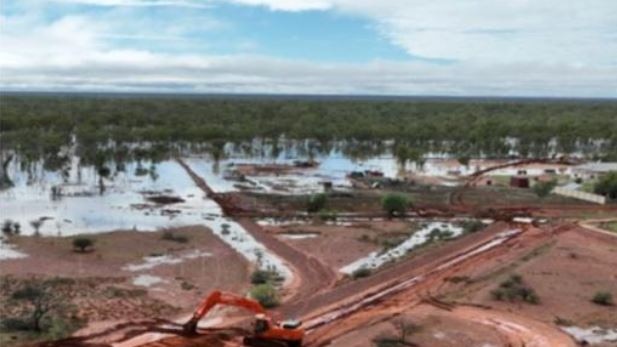Floods in QLD are set to impact the entire cattle industry
The flow of cattle out of QLD is set to be stalled by floods, while southern continue to sell down what they can. We explore the implications.

Northern rain and public holidays are set to throw the nation’s cattle and sheep slaughter rates a few curveballs in the coming weeks, as processors adjust to the disruptions and buyers look south for stock.
Meat and Livestock Australia market information manager Stephen Bignell said slaughter numbers would be affected over the next few weeks by a few factors.
These included flooding in Queensland and Easter and Anzac Day public holidays.
“In two weeks time, we have a couple of short killing weeks, and it will influence throughput,” Mr Bignell said.
“Processors in the north (Queensland) were just gearing back up after falls in production due to Cyclone Alfred, and now they will have decreased supply due to flooding.”
March weekly slaughter figures included one seven-day period where numbers were the highest since late 2019.
And while parts of southern Australia were dry and producers were offloading numbers, slaughter rates going forward would be balanced by small turn-offs further north, he said.
The rain and disruptions have influenced major store markets in the south in the past week, with Naracoorte’s monthly store sale of 3500 steers and heifers recording a stronger result on the back of northern and some local demand.
Thomas Degaris and Clarkson agent Rob Handbury reported the rain in the north, and potential fears of missing out on quality cattle, helped drive the market, even on lighter lines.
Angus feeder steers sold for about 400c/kg and 410-425c/kg if EU accredited, while coloured feeders were about 20c/kg less on most sales. Light to mid-weight Angus steers, 230-350kg were quoted as making 400-440c/kg.
Meanwhile, according to MLA, after a dip last month in processing volumes, because of the cyclone and the long weekend, the week ending March 21 resulted in some major plants put on extra shifts, lifting slaughter numbers to “impressive figures”.
Overall cattle slaughter was up 14 per cent to 149,012 head week-on-week – the largest weekly throughput since December 2019. In the first quarter of the year slaughter sat 11 per cent above 2024 rates.
Lamb slaughter was also just shy of breaking records, as processors caught up after short processing weeks.
Lamb slaughter is tracking 2 per cent above year-to-date 2024 rates, with Victoria leading the charge with its volume up 20 per cent on week-on-week rates.
Victoria processed 264,579 lambs for the week ending March 21 – its largest week ever.




